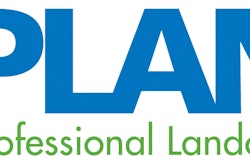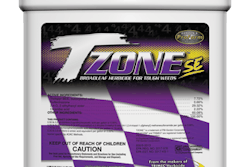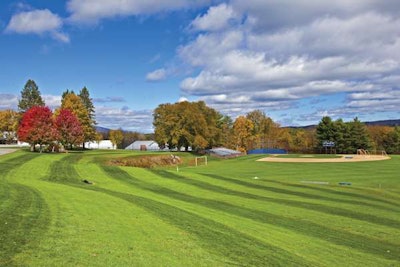
The summer months are finally behind us, and cool-season turf is getting the break it needs to recover from heat, pests and drought. But, there’s no rest for the weary – it’s time for a complete fall fertilization program to get your customer’s turf ready for the spring.
Proper nutrient management is one of the most important factors for fall fertilization, so it’s essential to choose a program that works best for turf specific to weather conditions.
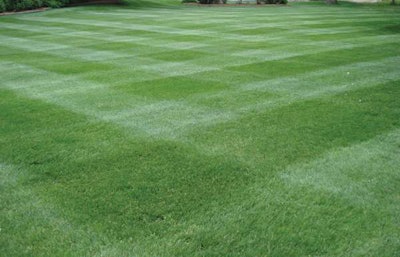 Overseeded Bermuda grass with perennial ryegrass blends are fertilized with Agrium Advanced Technologies’ XCU slow-release fertilizer.
Overseeded Bermuda grass with perennial ryegrass blends are fertilized with Agrium Advanced Technologies’ XCU slow-release fertilizer.Researchers have found that a fall fertilization program creates additional benefits that can carry well into the next year. Studies at Ohio State University show overall plant/turfgrass physiological health is improved for the following season with a fall fertilizer application vs. turf that is untreated at the end of the growing season.
Fall fertilization also helps turf recover more quickly from summer stress, maintaining a green turf color into the early winter, while providing quick green-up in the spring. Jonathan Copeland, president of CopelandScapes in Gadsden, Alabama, has experience this firsthand.
“Serving more than 4 million square feet of turf and vegetation in the transition zone, it is crucial we apply a reliable product in the fall on our cool-season blends of perennial ryegrass and bluegrass that consistently promotes optimal nutrient uptake by the plant,” Copeland says.
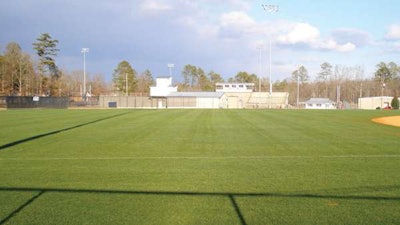 Landscaper Jonathan Copeland applies fertilizer in early October and then again in early-to-mid December.
Landscaper Jonathan Copeland applies fertilizer in early October and then again in early-to-mid December.Copeland’s fall fertilization is simple: One application in the beginning of October, followed by an early-to-mid December application helps relieve home and commercial turf, as well as athletic fields from surge growth, yielding healthy plant growth and color for the next season.
“Fall fertilization improves the condition of turf and vegetation in the fall and spring – great for us both economically and from a sustainability standpoint,” Copeland says.
A fall feeding can also help turf grow deeper roots during the spring. The key is preserving valuable carbohydrate reserves for root development that might otherwise be depleted by excessive shoot growth, which often results from early spring fertilization.
“The benefits of a fall fertilization program are growing beyond the aesthetics of providing seasonally greener turf,” says Dr. Eric Miltner, an agronomist. “LCOs can reduce the amount of fertilizer they use, and a fall feeding sets up the property to become healthier, denser and better able to withstand the stresses of the summer outdoor season.”
The ideal time for fall fertilization varies, largely dependent on soil temperatures so that root systems are still active and can store nutrients. Regardless of the timing, the benefits of a fall program are changing the landscape of fertilization programs.
“The environmental, economic and efficiency benefits of fall fertilization are hard to ignore,” Miltner says. “They span the fall, winter and spring seasons and create greener, healthier turf that uses resources more effectively and helps turf managers do their jobs more efficiently.”
EDITOR’S NOTE: This article was written by Bob Raley, agronomist, Agrium Advanced Technologies.
